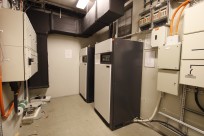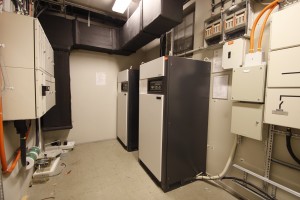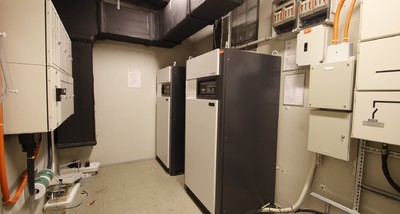To cope with short power outage some facilities are equipped with uninterruptible power supply.
An uninterruptible power supply is an electrical apparatus that provides emergency power to a load when the input power source, typically mains power, fails.
A UPS differs from an auxiliary or emergency power system or standby generator in that it will provide near-instantaneous protection from input power interruptions, by supplying energy stored in batteries, supercapacitors, or flywheels. The on-battery runtime of most uninterruptible power sources is relatively short (only a few minutes) but sufficient to start a standby power source or properly shut down the protected equipment.
A UPS is typically used to protect hardware such as computers, data centers, telecommunication equipment or other electrical equipment where an unexpected power disruption could cause injuries, fatalities, serious business disruption or data loss. UPS units range in size from units designed to protect a single computer without a video monitor to large units powering entire data centers or buildings.
The sounds we hear are harmonics of the frequency inverter that converts the DC voltage to AC voltage. Many new smaller UPSs have batteries and electronics in the same cabinet. This, however, is the older version and is relatively large, which means that the batteries are placed in another room just next door.
Estimated age at UPS about 20-25 years.
The new UPS systems have improved efficiency and almost completely lacks the characteristic sound.
Sound recordist: Torsten Nilsson
Photographer: Torsten Nilsson



 ARTIKLAR I WIKIPEDIA
ARTIKLAR I WIKIPEDIA ARTIKLAR I WIKIDATA
ARTIKLAR I WIKIDATA BILDER I WIKIMEDIA COMMONS
BILDER I WIKIMEDIA COMMONS


